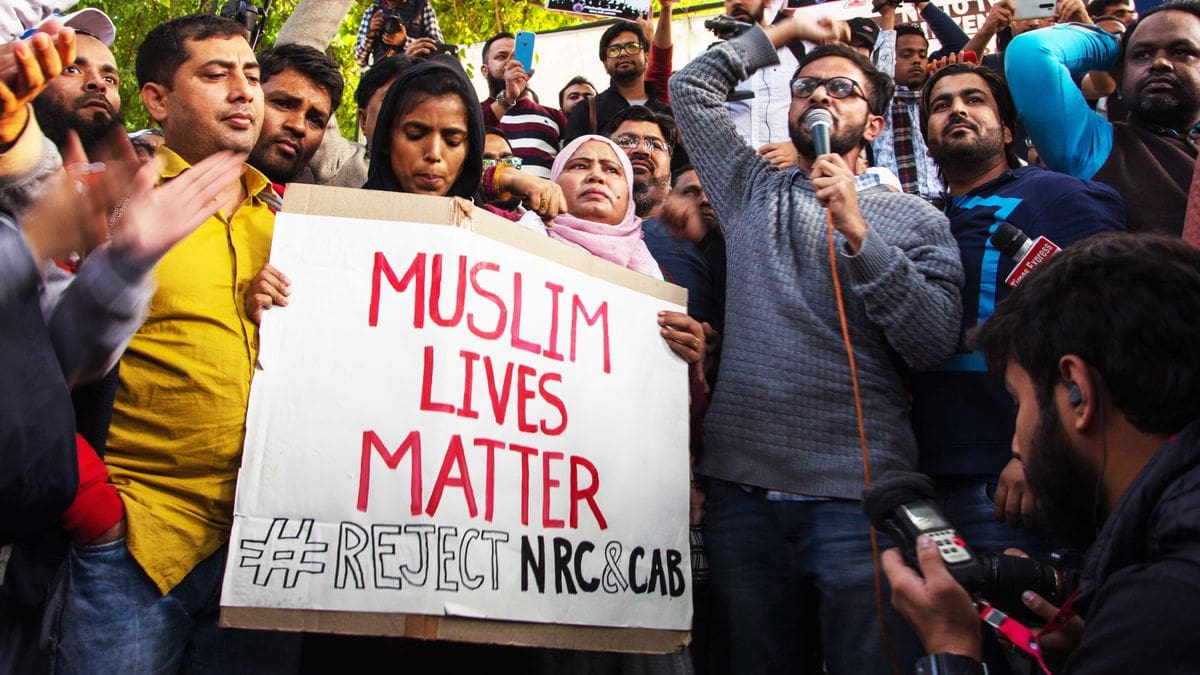Last week, the Indian Parliament passed the Citizenship Amendment Act (CAA), effectively permitting fast-tracked citizenship for non-Muslim refugees from Afghanistan, Pakistan and Bangladesh, while excluding Muslim refugees from this naturalisation. The Act comes in the context of a litany of anti-Muslim measures passed by the Hindu nationalist Modi government, which was re-elected this year for another term.
In response, students from Jamia Millia Islamia University, in New Delhi, and Aligarh Muslim Universities, in Uttar Pradesh, hosted protests which were met with police brutality, internet blockades, poor mainstream media coverage and evidence of hired non-police actors carrying out violence. Across the country thousands of students have mobilised in solidarity. The excessive use of force, including tear gas, lathi charges (wooden batons) and sexual assaults have been reported across campuses. Many students have been detained, beaten and denied legal help.
Supporters of the CAA claim it is simply benevolently helping those Hindu, Sikh, Jain, Christian, Parsi and Buddhist migrants fleeing persecution in Muslim-majority countries. They now only need proof of 6 years of residence in India, as opposed to the 12 years Muslim migrants would need to gain citizen rights.
However, Modi is known for his populist and right-wing agenda of defining India for the Hindus, despite it being a constitutionally secular and multi-faith country. Modi’s success draws on defining Islam as the “other”, utilising divisions forged by British colonialists, historical narratives of ‘invasion’, caste and class to polarise communities.
The CAA clearly excludes instances where Muslims are minorities, notably the Rohingya Muslims from Myanmar, many of whom reside in overcrowded camps in Bangladesh, and Tamils in Sri Lanka. The Act also excludes members of minority sects of Islam where they are persecuted within Muslim-majority countries.
Recently, the BJP-RSS created a National Register of Citizens, piloted in Assam, which forced those living in the state to produce documentation papers of Indian citizenship or face deportation or detention in camps, echoing Australia’s Manus Island camps, Uyghur detention centres in Western China and to some, those of Nazi Germany. Around 2 million people now face statelessness and this will expand as the program is rolled out across the country.
The move also follows the repeal of Article 370, a constitutional clause granting a degree of autonomy to the contested Muslim-majority state of Kashmir, which has led to severe repression of the Kashmiri population by the government. More recently, a landmark Supreme Court decision has permitted a Hindu temple to be built over the site of the now destroyed Babri Masjid (mosque), in Ayodhya.
The CAA is just the latest manifestation of the Modi government’s broader Hindutva project, excluding Muslims and undermining secularism in the world’s largest democracy. More broadly, it is indicative of growing religious-based discrimination within the country. Islamophobia has become increasingly mainstream, with reports of increasing instances of anti-Muslim violence. With India supposedly being the largest democracy in the world, it raises the question: where and when will the government respect the rights of its people to protest freely?
An earlier version of this article mentioned simultaneous protests in Assam. Protests in Assam are separate from the protests discussed in this article, instead focusing on the dangers to local identity and culture from mass immigration.





